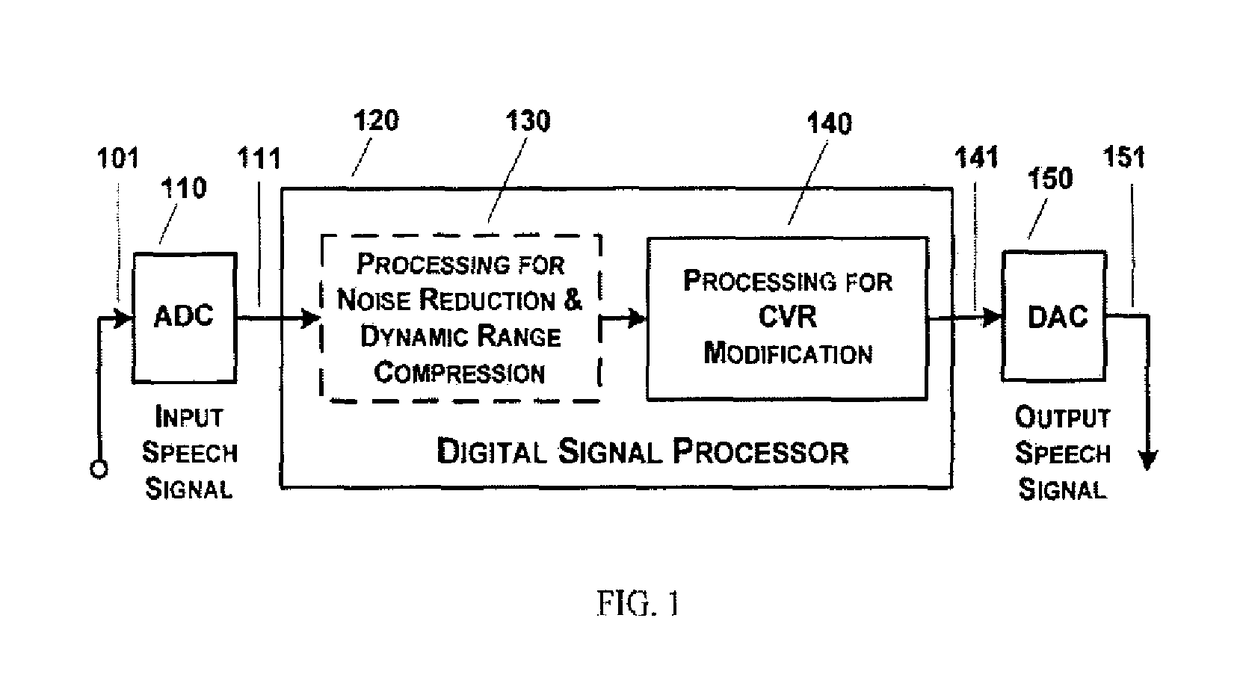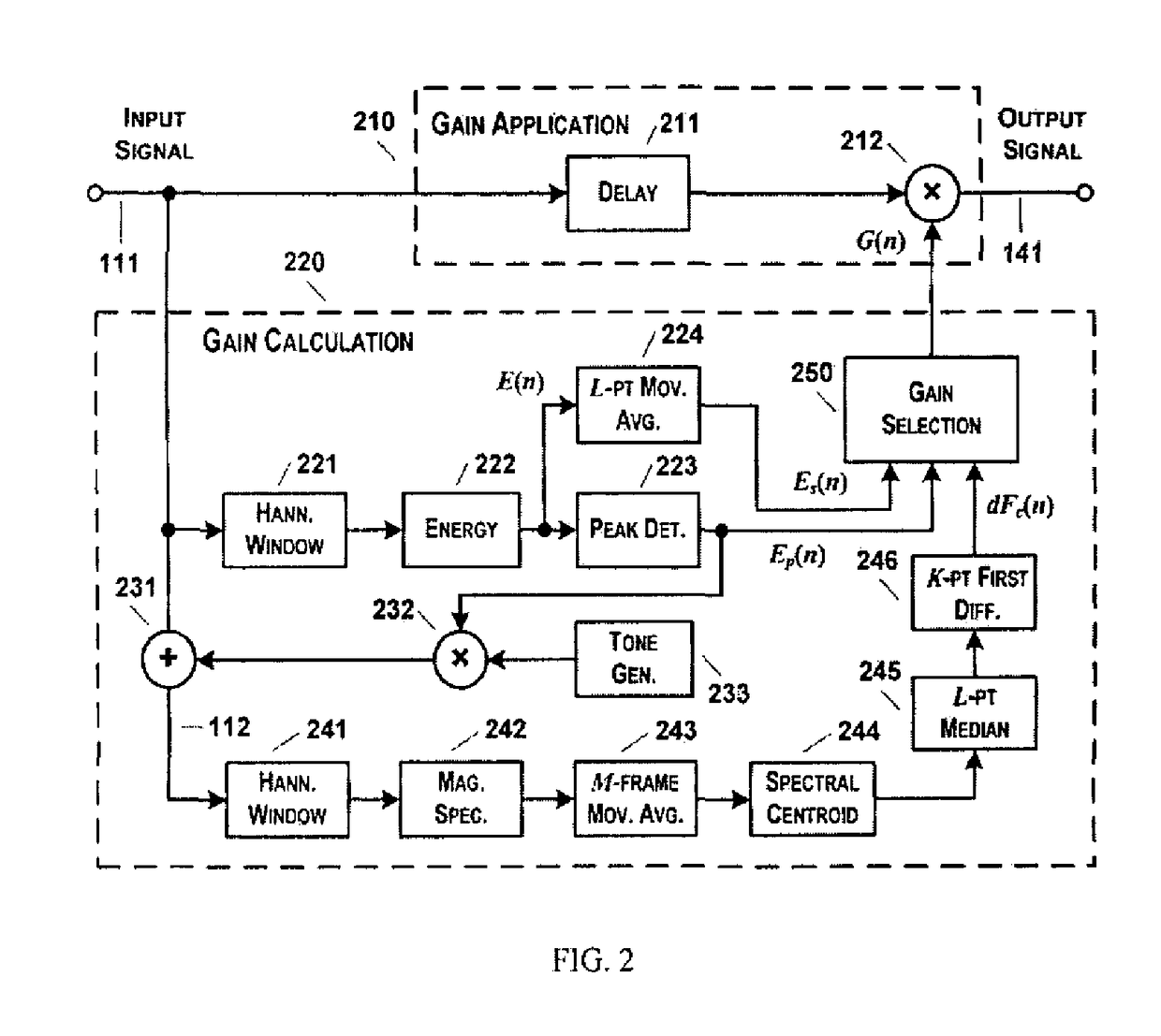Method and system for consonant-vowel ratio modification for improving speech perception
a technology of consonant and vowel, applied in the field of signal processing, can solve the problems of limiting the adaptability of the speaker to speaker variability, the relative less targeted target cannot be improved by duration modification, and the processing related artifacts, etc., to achieve low computational complexity and memory requirements, and low signal delay
- Summary
- Abstract
- Description
- Claims
- Application Information
AI Technical Summary
Benefits of technology
Problems solved by technology
Method used
Image
Examples
Embodiment Construction
[0025]The present invention proposes a method and a system for consonant-vowel ratio modification for improving speech perception under adverse listening conditions and for use in communication devices and hearing aids. The processing technique assumes clean speech at a conversational level to be available as the input signal. In case of noisy input, the processing may be used along with a speech enhancement technique for noise suppression. In case of input with wide variation in the signal level, a dynamic range compression technique may be used. The processing is applied to make the speech signal robust against further degradation under adverse listening conditions and it does not adversely affect the perception of non-speech audio signals. The processing method along with the system is explained below with reference to the accompanying drawings in accordance with an embodiment of the present invention.
[0026]FIG. 1 is a schematic illustration of the CVR modification system in acco...
PUM
 Login to view more
Login to view more Abstract
Description
Claims
Application Information
 Login to view more
Login to view more - R&D Engineer
- R&D Manager
- IP Professional
- Industry Leading Data Capabilities
- Powerful AI technology
- Patent DNA Extraction
Browse by: Latest US Patents, China's latest patents, Technical Efficacy Thesaurus, Application Domain, Technology Topic.
© 2024 PatSnap. All rights reserved.Legal|Privacy policy|Modern Slavery Act Transparency Statement|Sitemap



